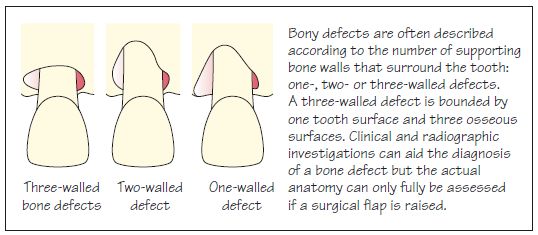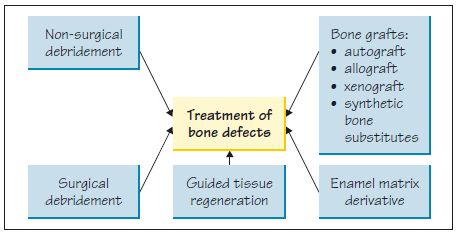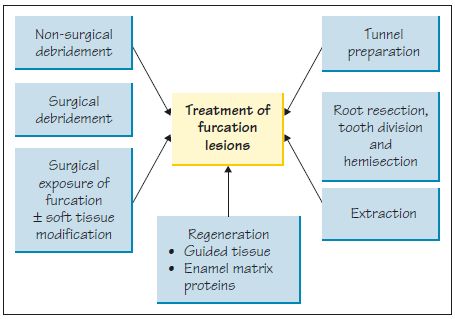27
Bone defects and furcation lesions
Figure 27.1 Anatomy of bone defects.

Figure 27.2 Treatment of bone defects.

Figure 27.3 Use of synthetic bone graft (PerioGlas®). (a) Synthetic bone graft material on an instrument prior to placement. (b) Placement of the synthetic bone graft material. Courtesy of Mr P. J. Nixon.

Figure 27.4 Classification of furcation involvement.

Figure 27.5 Treatment of furcation lesions.

Figure 27.6 Root resection.

Alveolar bone resorption leads to the creation of bony defects (infrabony or intrabony), which differ in anatomy from one tooth site to another (Fig. 27.1).
Treatment of bone defects
The different methods of treatment are depicted in Fig. 27.2.
Non-surgical debridement
Surgical access for debridement
– May result in further bone loss so use with caution to create an architecture that allows better flap adaptation.
Simp/>
Stay updated, free dental videos. Join our Telegram channel

VIDEdental - Online dental courses


